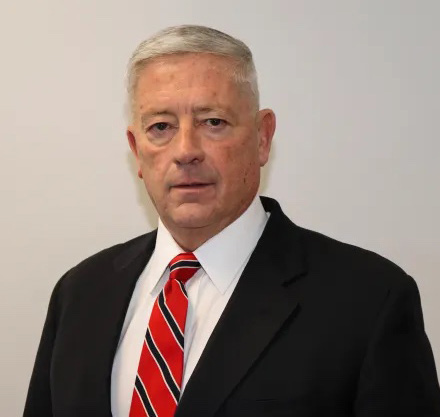BSA Youth Protection Mission Statement
True youth protection can be achieved only through the focused commitment of everyone in Scouting. It is the mission of Youth Protection volunteers and professionals to work within the Boy Scouts of America to maintain a culture of Youth Protection awareness and safety at the national, territory, area, council, district, and unit levels. Protección Juvenil En Español
Leadership Selection
The Boy Scouts of America takes great pride in the quality of our adult leadership. Being a leader in the BSA is a privilege, not a right. The quality of the program and the safety of our youth members call for high-quality adult leaders.
The adult application requests background information that should be checked by the unit committee or the chartered organization before accepting an applicant for unit leadership. While no current screening techniques exist that can identify every potential child abuser, we can reduce the risk of accepting a child abuser by learning all we can about an applicant for a leadership position—his or her experience with children, why he or she wants to be a Scout leader, and what discipline techniques he or she would use.
The Boy Scouts of America (BSA) has a multilayered adult leader selection process that includes criminal background checks administered by a nationally recognized third party and other screening efforts. Click here for information on the selection process.
Required Training
- Youth Protection training is required for all BSA registered volunteers and is a joining requirement.
- Youth Protection training must be taken every two years. If a volunteer’s Youth Protection training record is not current at the time of recharter, the volunteer will not be re-registered.
- Watch the Understanding Youth Protection Video
New to Scouting? Click here to login and take Youth Protection training. You do not have to be a registered member of the Boy Scouts of America to take Youth Protection training.
To take Youth Protection training go to My.Scouting.org and create an account. You’ll receive an email notification with your account information, including a member ID/reference number.
From the My.Scouting.org portal, click Menu then My Dashboard from the menu list. The My Training page displays to take Youth Protection training. Upon completion, you may print a training certificate to submit with a volunteer application. Your training will automatically be updated in our system and associated with the member ID/reference number issued when you created the account.
When your volunteer application is approved, you will receive a BSA membership card that includes your member ID number.
The Boy Scouts of America places the greatest importance on creating the most secure environment possible for our youth members. To maintain such an environment, the BSA developed numerous procedural and leadership selection policies and provides parents and leaders with resources for the Cub Scout, Scouts BSA, and Venturing programs.
Youth Protection Reporting Procedures for Volunteers
There are two types of Youth Protection–related reporting procedures all volunteers must follow:
- When you witness or suspect any child has been abused or neglected—See “Mandatory Report of Child Abuse” below.
- When you witness a violation of the BSA’s Youth Protection policies—See “Reporting Violations of BSA Youth Protection Policies” below.
Mandatory Report of Child Abuse
All persons involved in Scouting shall report to local authorities any good-faith suspicion or belief that any child is or has been physically or sexually abused, physically or emotionally neglected, exposed to any form of violence or threat, exposed to any form of sexual exploitation, including the possession, manufacture, or distribution of child pornography, online solicitation, enticement, or showing of obscene material. You may not abdicate this reporting responsibility to any other person.
Reporting Violations of BSA Youth Protection Policies
If you think any of the BSA’s Youth Protection policies have been violated, including those described within Scouting’s Barriers to Abuse, you must notify your local council Scout executive or his/her designee so appropriate action can be taken for the safety of our Scouts.
Steps to Reporting Child Abuse
- Ensure the child is in a safe environment.
- In cases of child abuse injury or medical emergencies, call 911 immediately.
- In addition, if the suspected abuse occurred in the Scout’s home or family, you are required by state law to immediately report/contact the local child abuse hotline.
- Notify the Scout executive or his/her designee, if he/she cannot be reached call the 24/7 Scouts First Helpline at 1-844-726-8871 or email, scoutsfirst@scouting.org
Find your local council Scout executive:
Council Number :
Council Name :
Address :
City :
State :
ZIP Code :
Phone No. :
Scouts First Helpline
- As part of its “Scouts First” approach to the protection and safety of youth, the BSA has established a dedicated 24-hour helpline to receive reports of known or suspected abuse or behavior that might put a youth at risk.
1-844-SCOUTS1 (1-844-726-8871) - If immediate assistance is needed in the handling of a sexual abuse allegation, contact Scouts First Helpline (1-844-SCOUTS1).
If someone is at immediate risk of harm, always call 911.
State Statutes on Child Welfare
Reporting requirements for child abuse differ from state to state. The Child Welfare Information Gateway provides access to information and resources on a variety of topics, including state statutes on child abuse. This site is not operated by the Boy Scouts of America.
Click here to download the Youth Protection/Membership Infraction Incident Information Form.
Click here to directly enter the Youth Protection/Membership Infraction Incident online.
Scouting’s Barriers to Abuse
Scouting’s Barriers to Abuse are published in the Guide to Safe Scouting and the online version is maintained as the most current. Frequently-asked questions are also addressed in this FAQ.
Digital Privacy
A key ingredient for a safe and healthy Scouting experience is the respect for privacy. Advances in technology are enabling new forms of social interaction that extend beyond the appropriate use of cameras or recording devices (see “Scouting’s Barriers to Abuse”). Sending sexually explicit photographs or videos electronically or “sexting” by cell phones is a form of texting being practiced primarily by young adults and children as young as middle-school age. Sexting is neither safe, nor private, nor an approved form of communication and can lead to severe legal consequences for the sender and the receiver. Although most campers and leaders use digital devices responsibly, educating them about the appropriate use of cell phones and cameras would be a good safety and privacy measure. To address cyber-safety education, the BSA has introduced the age- and grade-specific Cyber Chip program, which addresses topics including cyberbullying, cell-phone use, texting, blogging, gaming, and identity theft. Check it out.
BSA Social Media Guidelines
Although using social media is not a Scouting activity, their use to connect with others interested in Scouting can be a very positive experience. But the creation and maintenance of these channels requires forethought, care, and responsibility. Read more about the BSA Social Media Guidelines here.
Youth Protection During COVID: Digital safety and On-Line Scouting Activities:
https://www.scouting.org/health-and-safety/safety-moments/digital-safety-and-online-scouting-activities/
Key Resources
Guide to Safe Scouting
Single source of information for safe scouting. The guide is designed for adult leaders; topics include Youth Protection, Health and Safety and Reporting information. Frequently-asked questions are also addressed in the Youth Protection and Barriers to Abuse FAQs.
How to Protect Your Children From Child Abuse: A Parent’s Guide
These booklets are a basic resource to help parents understand how child abuse happens and keep their children safe. Exercises for parents and children are included. Several versions of the booklets are available:
- For Cub Scouts and their parents
- For Cub Scouts and their parents (in Spanish)
- For Scouts BSA members and their parents
Bullying Awareness
These fact sheets will help with bullying awareness and direct you to resources provided by the BSA and other entities we work with to protect children.
Download the Bullying Prevention Guide
Camp Leadership … A Guide for Camp Staff and Unit Leaders
Brochure for unit leaders and camp staff who are responsible for providing a safe and healthy camp setting where Scouts are free from the worries of child abuse.
Understanding and Preventing Youth-on-Youth Abuse Training Materials
The Boy Scouts of America places the greatest importance on creating the safest environment possible for our youth members. To that end, the BSA has created additional Youth Protection training for camp staff, NYLT staff, professionals, volunteers, and leaders regarding the prevention of youth-on-youth incidents and problematic behavior that might occur within the context of Scouting, especially in a camping or overnight setting.
This facilitator guide with an accompanying PowerPoint presentation for camp staff, NYLT staff, BSA leaders, parents, volunteers, and professionals should be delivered at the council, district, or unit level by a Youth Protection Champion, training chair, district chair, district executive, or other appropriate Scout leader to leaders for camping and overnight activities.
Suggested training opportunities include:
- Camp staff training
- NYLT staff training
- Existing facilitator-led Youth Protection training sessions
- Pre-camp leaders’ meetings for summer camp and first-time leaders’ meetings at all outings
- Scout executives’ and district executives’ trainings on responding to youth protection incidents
Understanding and Preventing Youth on Youth Abuse Training for Camp Staff and NYLT Staff – Facilitator Guide (1/29/2024)
Understanding and Preventing Youth on Youth Abuse Training for Camp Staff and NYLT Staff PowerPoint (1/29/2024)


